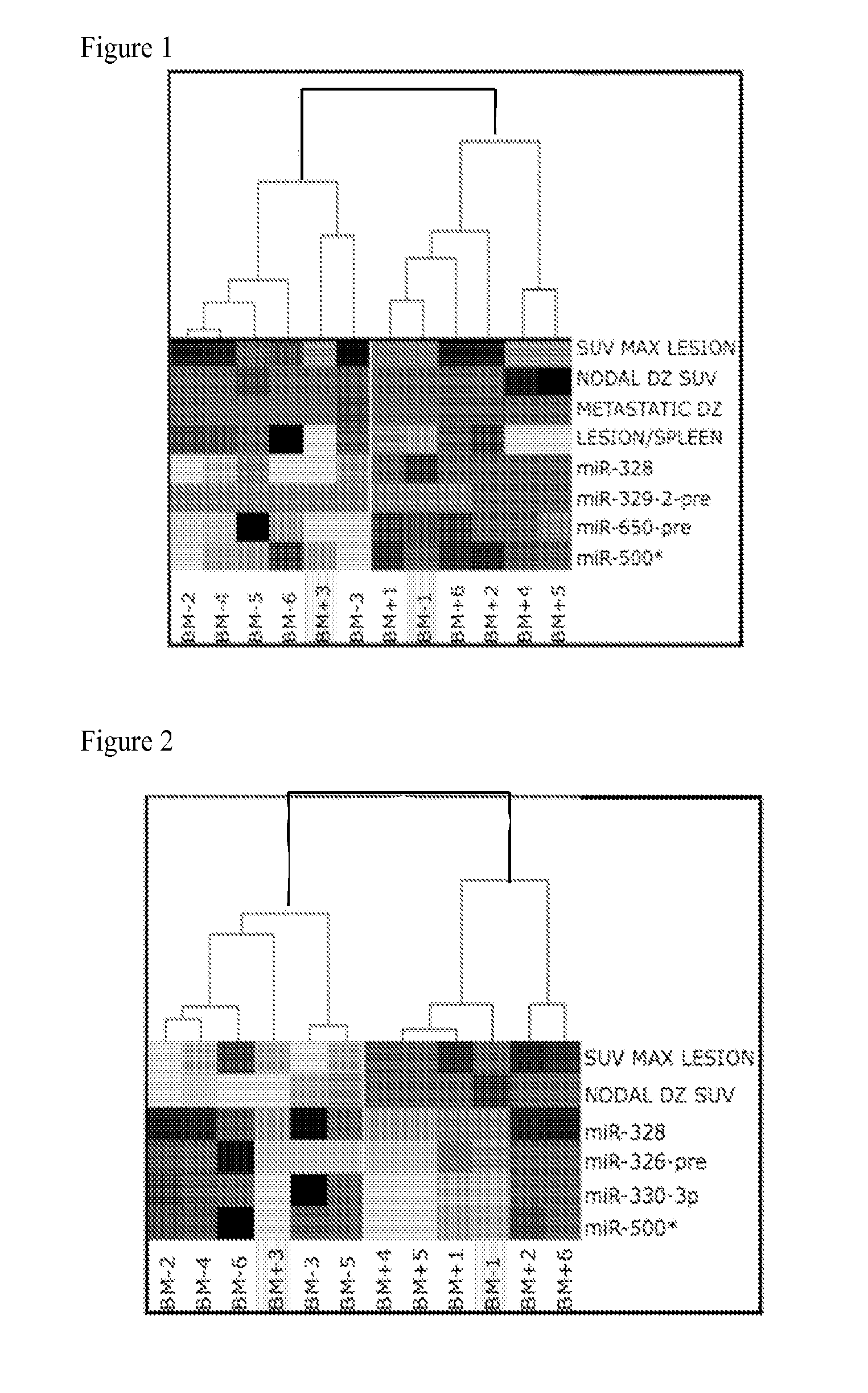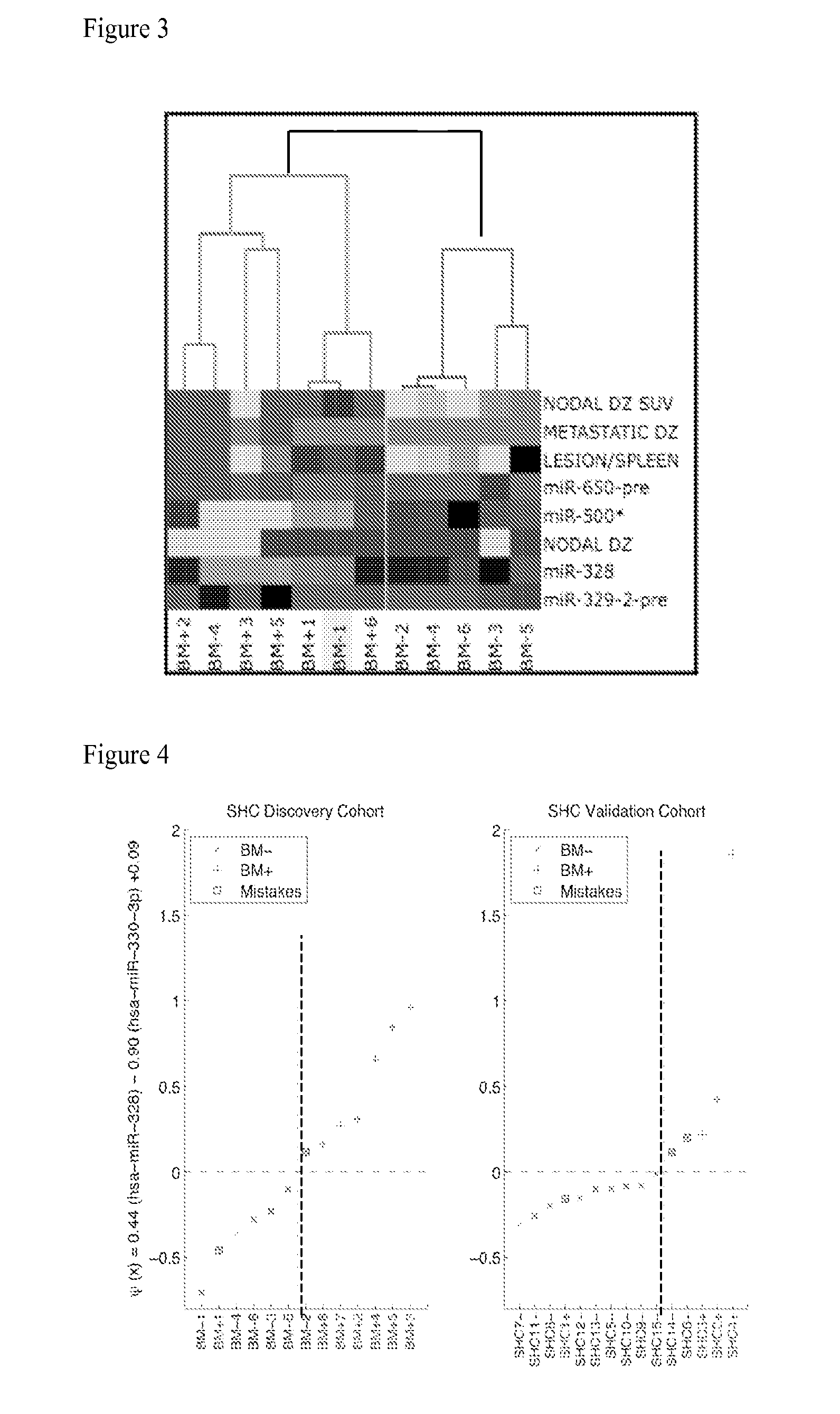Methods of assessing a risk of cancer progression
a risk and cancer technology, applied in the field of methods of assessing a risk of cancer progression, can solve the problems of significant neurologic, cognitive and emotional difficulties, negatively affecting survival, and previous efforts to characterize patients that will develop bm have been disappointing
- Summary
- Abstract
- Description
- Claims
- Application Information
AI Technical Summary
Benefits of technology
Problems solved by technology
Method used
Image
Examples
example 1
[0063]Under an Institutional Review Board approved protocol, NSCLC patients with brain metastasis (BM+) were identified. To be included in this study, CT chest, 18F-FDG PET / CT, and brain MRI imaging studies must have been performed within 30 days of one another. NSCLC patients without brain metastasis (BM−) were matched to BM+ by age, gender, histology, and stage at presentation. Multiple parameters were evaluated including primary tumor lesion metabolic activity on PET / CT using Standardized Uptake Measurements (SUVmax of brain, muscle, spleen, and chest nodal disease) by board certified radiologists. Summarization of clinical characteristics and breakdown of lung tumor based on histology of adenocarcinoma (AD) and squamous cell carcinoma (SCC) is shown in Table 1. RNA was extracted from the 12 formalin-fixed; paraffin embedded small cell lung cancer tumor specimens by manually scraping (macrodissection) the tumor from the slides followed by de-paraffinization with xylene. Total RNA...
example 2
[0084]Brain metastasis (BM) can affect up to 25% of non-small cell lung cancer (NSCLC) patients during their lifetime. Efforts to characterize patients that will develop BM have been disappointing.
[0085]miRNA microarray profiling was performed on samples from clinically matched lung NSCLC from patients with BM (BM+) and without BM (BM−). A T-test was used to select the top 19 miRNA candidates for validation by qRT-PCR. qRT-PCR confirmed miRNAs were then subjected to a multivariate analysis to identify the fewest miRNA needed to differentiate between BM+ and BM−, and validated on an independent validation cohort.
[0086]Of the 19 miRNA candidates identified by microarray analysis, 8 were confirmed to be significantly differentially expressed by qRT-PCR. Of these 8 miRNA targets, the expression of hsa-miR-328 and hsa-miR-330-3p were able to correctly classify BM+ vs BM− patients. The classifier was used in two validation sets and correctly classified 12 / 15 patients. We next showed that ...
PUM
| Property | Measurement | Unit |
|---|---|---|
| volumes | aaaaa | aaaaa |
| volume | aaaaa | aaaaa |
| nucleic acid amplification | aaaaa | aaaaa |
Abstract
Description
Claims
Application Information
 Login to View More
Login to View More - R&D
- Intellectual Property
- Life Sciences
- Materials
- Tech Scout
- Unparalleled Data Quality
- Higher Quality Content
- 60% Fewer Hallucinations
Browse by: Latest US Patents, China's latest patents, Technical Efficacy Thesaurus, Application Domain, Technology Topic, Popular Technical Reports.
© 2025 PatSnap. All rights reserved.Legal|Privacy policy|Modern Slavery Act Transparency Statement|Sitemap|About US| Contact US: help@patsnap.com



